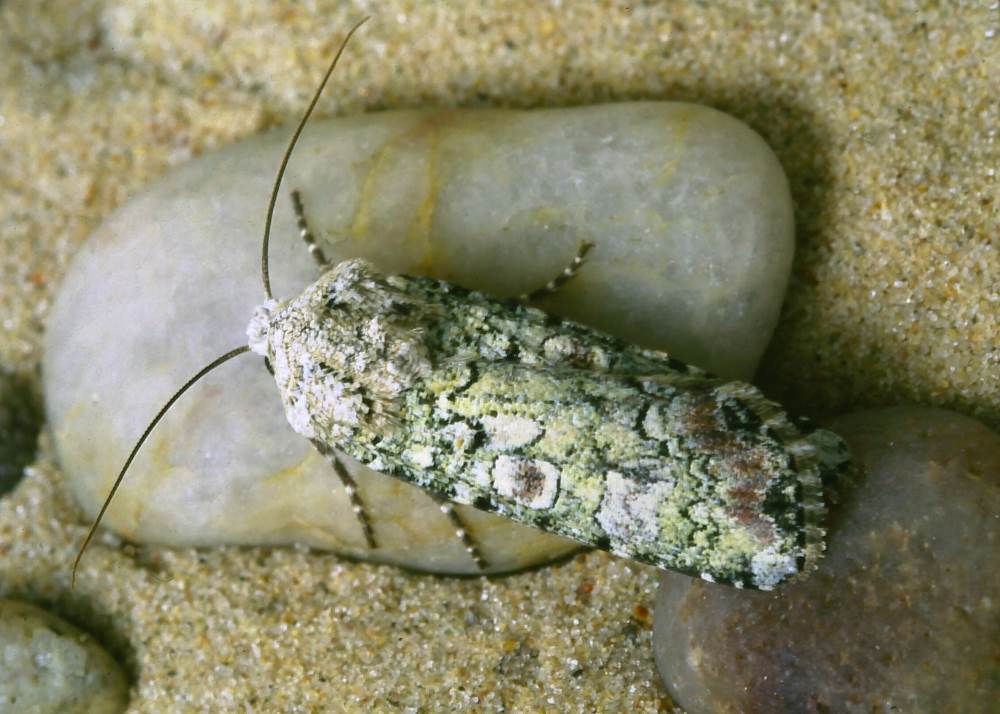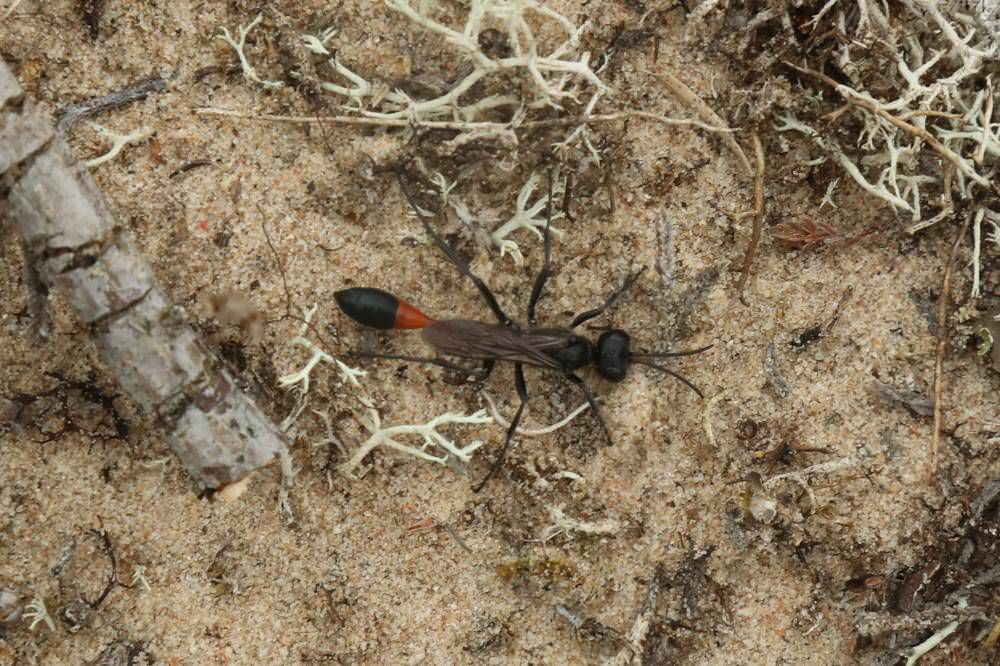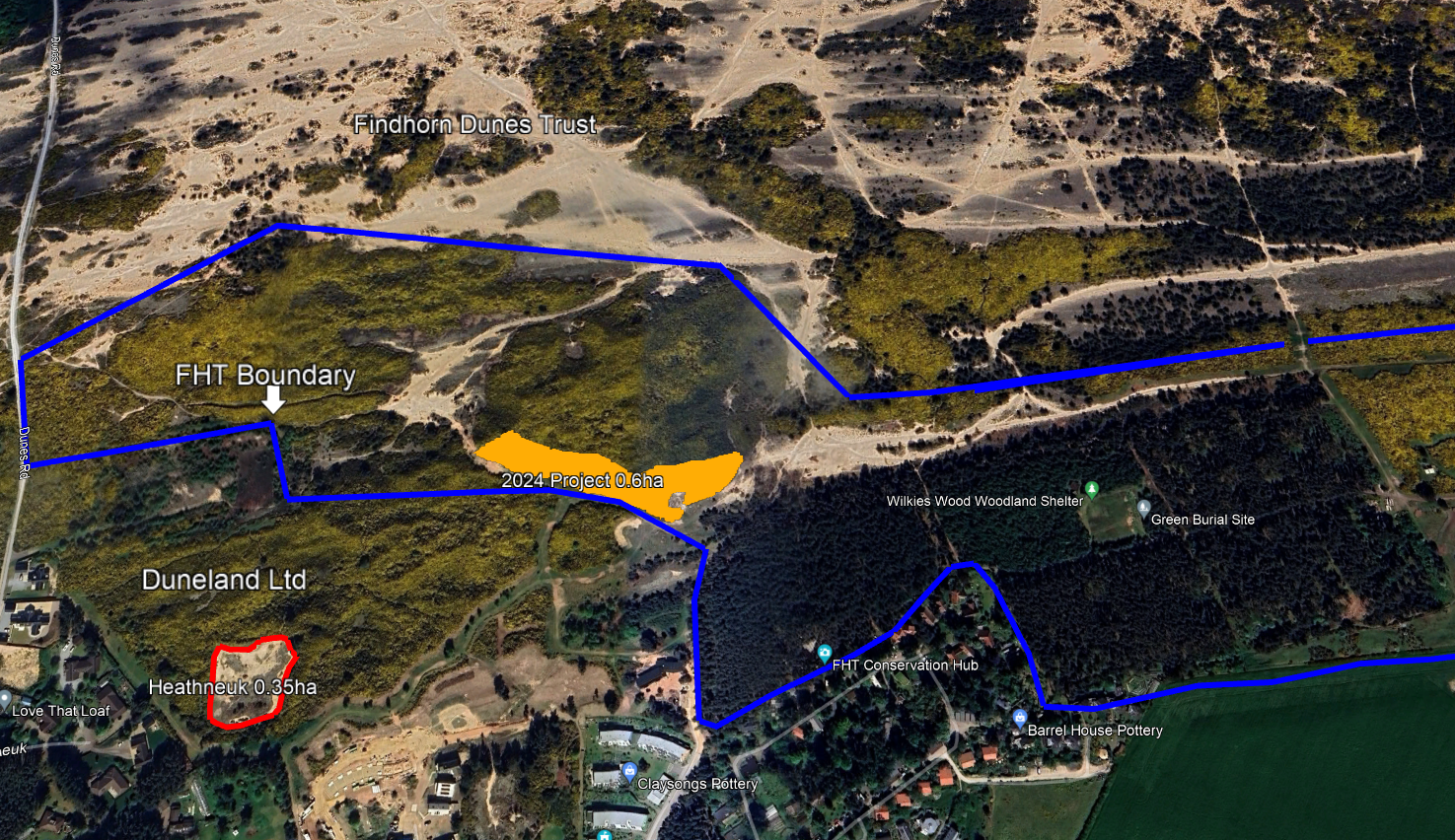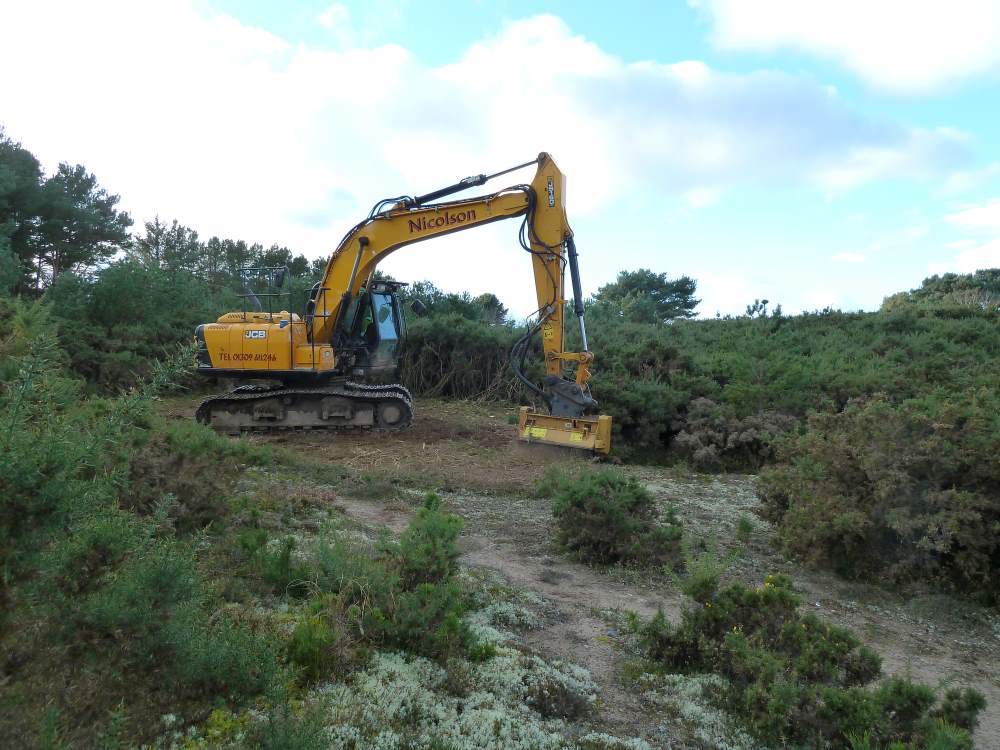We are very much looking forward to a visit from the charity Butterfly Conservation on Sunday 1st September. Tracy Munro (Species on the Edge Project) and Dr Tom Prescott (Head of Conservation) will be holding a mothing event at 10:30, at the Conservation Hub. Moths will be caught overnight and then viewed together, before being released unharmed back to their dune homes. We hope to see you there!
Did you know that the Findhorn Dunes are home to around 400 species of moths?! These include rare dune specialists such as the Portland and Lyme Grass moths. There are also records for even rarer species, such as Caryocolum blandelloides, new to science as recently as 1981 and with a UK range limited to dune systems in the western Moray Firth. Findhorn Dunes are also the most important site in Scotland for the moth Scythris empetrella, known from only one other place.
Moths are just one group of super-rare species found on the dunes. There are many others, including flies, wasps, leaf hoppers, lichens, and fungi. Indeed, our dunes are of national importance for biodiversity.

The dunes were historically part of the second largest sand dune system in Europe, but only small fragments of this wild ecosystem now remain, and those that do – including the Hinterland Area – are threatened by gorse encroachment. Healthy sand dune ecosystems have around 5% gorse cover, but in the Hinterland area its more like 90%, as you can see in the aerial photo. This is not a natural situation, its the result of the wind-sheltering effect of houses and plantation woodland, so that sand is no longer able to blow about, as it naturally would.
The Findhorn Hinterland Trust recognises the urgency of the world-wide biodiversity crisis and the importance of local action to restore rare habitats. The Trust has been clearing scrub over recent years using hand tools and volunteer work parties, but action on a larger scale is needed to restore sand dune habitats and secure the future of threatened species.

Thanks to your generous support we are now in the final stages of planning this year’s dune restoration work – converting around half a hectare of dense gorse to bare sand. The only way we can practically do this is with heavy machinery. The work will hopefully take place over five days in November. We will be using a forestry mulcher and then scraping back to bare sand with a large excavator. This may appear to be destructive, but please rest assured that we are using best practice methods to revitalise out dunescape. Similar work was done in 2020 at Heathneuk, as part of the North Whins ecological enhancement measures, has been very successful. Please do pop in and to have a look – you would never know that a big digger had opened this area up just four years ago.

Our local contact at the RSPB, Project Officer David Tompkins, recently sent us links to a conference on sand dune restoration in Wales . It is very interesting to see the scope and scale of sand dune restoration taking place elsewhere in the UK, and the various methods used. One of the things that stood out to me was the importance of newly-created bare sand for rare sand dune invertebrates, explained in Mike Howe’s presentation, in Session 2.
Please help us with this important project by keeping a safe distance from the machinery and by explaining to others how important this work is in restoring natural ecological processes and the precious biodiversity of our dunes.
Sean Reed,
Sand Dune Restoration Project

















Dune Restoration Update
We are very much looking forward to a visit from the charity Butterfly Conservation on Sunday 1st September. Tracy Munro (Species on the Edge Project) and Dr Tom Prescott (Head of Conservation) will be holding a mothing event at 10:30, at the Conservation Hub. Moths will be caught overnight and then viewed together, before being released unharmed back to their dune homes. We hope to see you there!
Did you know that the Findhorn Dunes are home to around 400 species of moths?! These include rare dune specialists such as the Portland and Lyme Grass moths. There are also records for even rarer species, such as Caryocolum blandelloides, new to science as recently as 1981 and with a UK range limited to dune systems in the western Moray Firth. Findhorn Dunes are also the most important site in Scotland for the moth Scythris empetrella, known from only one other place.
Moths are just one group of super-rare species found on the dunes. There are many others, including flies, wasps, leaf hoppers, lichens, and fungi. Indeed, our dunes are of national importance for biodiversity.
The dunes were historically part of the second largest sand dune system in Europe, but only small fragments of this wild ecosystem now remain, and those that do – including the Hinterland Area – are threatened by gorse encroachment. Healthy sand dune ecosystems have around 5% gorse cover, but in the Hinterland area its more like 90%, as you can see in the aerial photo. This is not a natural situation, its the result of the wind-sheltering effect of houses and plantation woodland, so that sand is no longer able to blow about, as it naturally would.
The Findhorn Hinterland Trust recognises the urgency of the world-wide biodiversity crisis and the importance of local action to restore rare habitats. The Trust has been clearing scrub over recent years using hand tools and volunteer work parties, but action on a larger scale is needed to restore sand dune habitats and secure the future of threatened species.
Thanks to your generous support we are now in the final stages of planning this year’s dune restoration work – converting around half a hectare of dense gorse to bare sand. The only way we can practically do this is with heavy machinery. The work will hopefully take place over five days in November. We will be using a forestry mulcher and then scraping back to bare sand with a large excavator. This may appear to be destructive, but please rest assured that we are using best practice methods to revitalise out dunescape. Similar work was done in 2020 at Heathneuk, as part of the North Whins ecological enhancement measures, has been very successful. Please do pop in and to have a look – you would never know that a big digger had opened this area up just four years ago.
Our local contact at the RSPB, Project Officer David Tompkins, recently sent us links to a conference on sand dune restoration in Wales . It is very interesting to see the scope and scale of sand dune restoration taking place elsewhere in the UK, and the various methods used. One of the things that stood out to me was the importance of newly-created bare sand for rare sand dune invertebrates, explained in Mike Howe’s presentation, in Session 2.
Please help us with this important project by keeping a safe distance from the machinery and by explaining to others how important this work is in restoring natural ecological processes and the precious biodiversity of our dunes.
Sean Reed,
Sand Dune Restoration Project